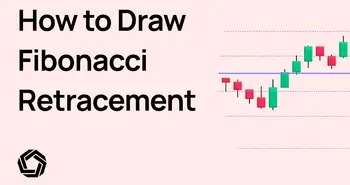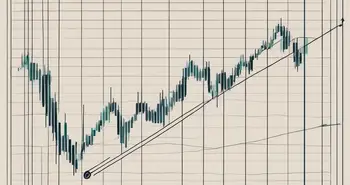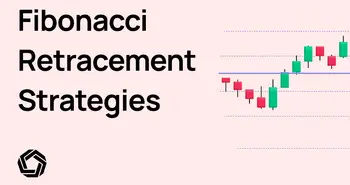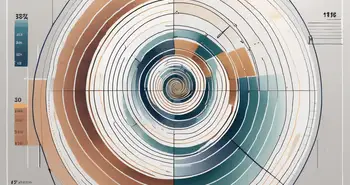Pivot Point Fibonacci: How It Works and Comparing All Types of Pivot Points

In trading, precision and timing are everything. Pivot points and Fibonacci retracement levels are powerful tools on their own, but when combined, they create a method for identifying precise entry and exit points. Fibonacci Pivot Points offer a unique way to blend technical analysis with market psychology, helping traders navigate volatile markets with confidence.
If you’ve been wondering what Fibonacci Pivot Points are, how they’re calculated, or how they compare to standard pivot points, you’re in the right place. By the end, you’ll have the insights needed to choose the pivot point strategy that aligns best with your trading goals—whether you’re looking for simplicity, precision, or adaptability to different market conditions.
What is a Fibonacci Pivot Point?
A Fibonacci Pivot Point is a trading tool that combines two widely used strategies: pivot points and Fibonacci retracement levels. While standard pivot points focus on calculating support and resistance levels based on the previous trading session’s high, low, and close, Fibonacci Pivot Points use Fibonacci ratios to identify more precise price zones.
Fibonacci ratios such as 38.2%, 50%, and 61.8% are not random numbers, they’re deeply rooted in market psychology. These levels reflect areas where traders historically place orders, creating natural support or resistance zones. When applied to pivot points, they help us forecast potential price reversals or continuations with greater accuracy.
Why does this matter? Markets are a reflection of collective human behavior, and Fibonacci Pivot Points tap directly into those tendencies. As traders, we can use this knowledge to stay one step ahead.
How Are Fibonacci Pivot Points Calculated?
Let’s break it down so you can apply this method confidently in your trading routine.
1.Calculate the Pivot Point (PP):
Use the formula:
PP = (High + Low + Close) / 3This gives you the central pivot point for the trading day.
2.Determine Fibonacci-Based Levels:
Now, calculate support and resistance levels using Fibonacci ratios:
R1 = PP + (High - Low) × 0.382
R2 = PP + (High - Low) × 0.618
S1 = PP - (High - Low) × 0.382
S2 = PP - (High - Low) × 0.618
3.Plot the Levels on Your Chart:
These levels will now serve as potential support or resistance zones, helping you make informed trading decisions.
On Morpher, our advanced charting tools make plotting Fibonacci Pivot Points simple. With just a few clicks, you can visualize these levels and incorporate them into your strategy seamlessly.
Pivot Point Standard vs Fibonacci: Which is Better?
It’s a question we hear often, and the answer largely depends on your trading style and market conditions.
- Pivot Point Standard:
This method is straightforward and widely used, making it a great choice for beginners or traders who need quick, reliable levels in range-bound markets. However, it doesn’t account for market psychology in the same way Fibonacci ratios do. - Fibonacci Pivot Points:
These are particularly effective in volatile or trending markets. By incorporating Fibonacci levels, they provide more precise confluence zones, making them a favorite among advanced traders.
Which should you choose?
If you’re trading on Morpher, we recommend trying both methods. Use standard pivot points for a broader view and switch to Fibonacci Pivot Points when you need pinpoint accuracy in predicting market reversals and if you are still not trading on Morpher, why not? Try the future of trading now.
Comparison Table: Which Pivot Point Type Suits Your Style?
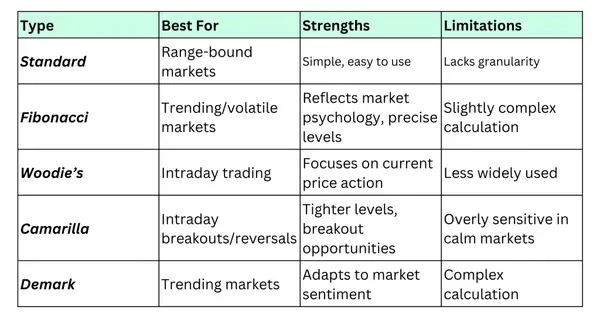
Which Pivot Point Should You Use?
The choice of pivot point depends on your trading style and market conditions:
- If you’re looking for a simple, reliable method, Standard Pivot Points are a great starting point.
- For precision and psychological insight, Fibonacci Pivot Points stand out as the most versatile choice.
- Intraday traders working in volatile markets may find Woodie’s or Camarilla Pivot Points more useful.
- If you prefer a dynamic approach tailored to market sentiment, Demark Pivot Points might suit you best.
FAQs
1. What makes Fibonacci Pivot Points unique?
Fibonacci Pivot Points combine standard pivot points with Fibonacci ratios (38.2%, 50%, 61.8%), offering more precise support and resistance levels. This blend adds psychological relevance, making them ideal for volatile or trending markets.
2. How do I use Fibonacci Pivot Points effectively?
Identify key levels like R1, R2, S1, and S2 on your chart. Watch price behavior at these levels, looking for bounces, breakouts, or consolidations. Combine with other indicators like RSI or moving averages for confirmation, and set stop-loss and take-profit levels for disciplined risk management.
3. Are Fibonacci Pivot Points suitable for all traders?
Yes, they work for day traders on short time frames and swing traders on longer ones. Their versatility and ability to provide precise levels make them adaptable to most trading styles and market conditions.
4. What are common mistakes with Fibonacci Pivot Points?
Relying solely on them without considering the market trend, using inappropriate time frames, or overcrowding charts with conflicting indicators can reduce effectiveness. Focus on confluence zones and use them as part of a broader strategy.
5. How do I choose the right pivot point type?
Choose based on your trading style. Standard pivot points are great for simplicity in range-bound markets, while Fibonacci Pivot Points excel in trending or volatile conditions. Intraday traders may prefer Woodie’s or Camarilla Pivot Points, while trend-followers might find Demark Pivot Points more useful.
Conclusion
Fibonacci Pivot Points combine precision and psychology, making them a valuable tool for identifying high-probability trades. Whether you're a beginner or an experienced trader, they offer clarity in spotting opportunities and managing risk. Test them in different scenarios, adapt to your trading style, and let this strategy become a core part of your trading toolkit.
Ready to elevate your trading game with the strategies discussed in this article? Look no further than Morpher, the revolutionary trading platform that's changing the game with blockchain technology. With Morpher, you can apply the Pivot Point Fibonacci method across various markets with zero fees, infinite liquidity, and the flexibility of fractional investing. Embrace the future of trading with the safety of a non-custodial wallet, the power of 10x leverage, and a unique trading experience on the Ethereum Blockchain. Sign Up and Get Your Free Sign Up Bonus today to start trading like a pro on Morpher!

Disclaimer: All investments involve risk, and the past performance of a security, industry, sector, market, financial product, trading strategy, or individual’s trading does not guarantee future results or returns. Investors are fully responsible for any investment decisions they make. Such decisions should be based solely on an evaluation of their financial circumstances, investment objectives, risk tolerance, and liquidity needs. This post does not constitute investment advice.

Painless trading for everyone
Hundreds of markets all in one place - Apple, Bitcoin, Gold, Watches, NFTs, Sneakers and so much more.

Painless trading for everyone
Hundreds of markets all in one place - Apple, Bitcoin, Gold, Watches, NFTs, Sneakers and so much more.



